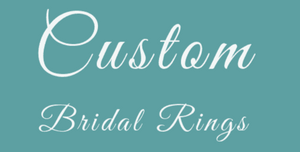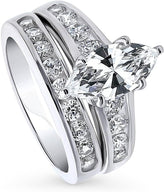Understanding CVD Diamonds: Are They Worth the Hype?
Understanding CVD Diamonds: Are They Worth the Hype?
Introduction to CVD Diamonds

Over the past decade, CVD diamond properties have rapidly become a hot topic in the jewelry world, and for good reason. As discussions about labgrown diamond comparison and CVD diamond pricing heat up, many of us find ourselves wondering: Are they truly worth all the hype? I’ve spent years tracking trends at the intersection of science and luxury, and it’s clear that CVD diamonds are shaking up the industry. These lab-grown gems result from a remarkable technological process that deposits carbon onto a tiny diamond seed, creating stones indistinguishable from their natural counterparts. Today, we’re seeing exceptional clarity, sustainability, and a diversity of styles that make them attractive—especially for buyers who care about both value and values.
What Are CVD Diamonds?

So, what exactly is a CVD diamond? The term “Chemical Vapor Deposition” might sound daunting at first, but let me break it down. CVD diamonds are created by placing a microscopic diamond seed inside a vacuum chamber, eliminating outside contaminants. Here, a mix of carbon-rich gases—primarily methane and hydrogen—are introduced and energized, typically using plasma to kick off a growing process. Carbon atoms attach to the diamond seed one layer at a time, eventually forming a gemstone with the same crystal structure and fundamental makeup as a natural diamond.
Unlike some alternative stones, CVD diamonds aren’t “fakes.” The key differences between these and mined diamonds generally show up in their growth structure and certain types of internal inclusions. Still, whether it’s physical, chemical, or optical properties, CVD diamonds pass muster. For eco-conscious consumers, knowing their purchase doesn’t come with environmental baggage is a huge plus.
Properties of CVD Diamonds

If you’re comparing CVD diamond properties to those of natural stones, you’ll be pleasantly surprised—these are not just imitators but true equals, often surpassing miners’ finds in certain regards. Most notably, CVD diamonds are typically classified as Type IIA, meaning they’re practically nitrogen-free and among the purest diamonds on the market.
- Hardness: A Mohs scale rating of 10, offering unrivaled durability for everyday wear.
- Thermal Conductivity: Matches that of natural diamonds, making them suitable beyond jewelry, such as in electronics and high-tech industries.
- Optical Performance: Expect excellent brilliance, fire, and clarity. These lab diamonds often have fewer inclusions or visible defects thanks to a controlled growing environment.
- Chemistry: Virtually pure carbon, crafted under precise lab conditions to reduce contamination.
Honestly, I’ve seen many CVD diamonds outperform even highly graded natural stones in clarity and consistency. They’re reliable, sustainable, and simply stunning—you don’t have to compromise ethical standards for aesthetics.
Environmental and Ethical Advantages

Let’s talk ethics—a huge concern for many of us. Traditional diamond mining has a checkered past, with stories of environmental destruction and “blood diamonds” financing conflict. With labgrown diamond comparison increasingly relevant, the case for CVD stones becomes even stronger.
- Low Carbon Footprint: Studies suggest CVD production emits up to 95% less CO2 than typical mining operations.
- Minimal Land Disruption: Lab settings mean no ecosystem destruction or displacement of wildlife.
- Reduced Water Use: Lab-grown processes consume far less water, protecting precious resources.
- Conflict-Free Guarantee: You’re not supporting any illicit trade—traceability and transparency are built-in from day one.
Given all this, it’s easy to see why CVD diamonds resonate with shoppers who want beautiful stones without ethical compromises. Personally, I believe ethics and luxury can—and should—go hand in hand.
CVD Diamond Pricing Comparison

Pricing is arguably the most disruptive part of the CVD diamond pricing conversation. When I first started comparing price lists, the difference between CVD and natural stones was honestly staggering. It’s not a mere discount—it’s a reimagining of diamond economics.
- A 1-carat CVD diamond might cost as little as $689, compared to several thousand for a similar natural diamond.
- The cost gap widens as you look at quality, size, or specialty cuts—premium CVD diamonds don’t charge the same astronomical markups you see with rare mined stones.
- Even at the top end, buyers can afford a higher carat weight, better color, or increased clarity without ballooning costs.
However, one note of caution: lab-grown diamond resale values may not match those of mined stones, largely because supply is abundant and ever-increasing. If investment is your main priority, this is worth keeping in mind. Yet for most of us, the combination of affordability, ethics, and beauty offsets the concern over long-term value. From my perspective, democratizing access to dazzling gems is a major win for consumers everywhere.
Are CVD Diamonds Worth Buying?

So, after all these comparisons and price breakdowns, should you buy CVD diamonds? In my view, yes—particularly if you desire a marriage of beauty, innovation, and responsibility. CVD stones deliver on all three.
- Cost Savings: Expect 40–85% savings compared to mined stones for the same stunning look.
- Aesthetic Appeal: No sacrifice on cut, color, or clarity—often, CVD diamonds look better than traditional options at the same price point.
- Peace of Mind: Every CVD stone is conflict-free, produced with stringent oversight and ethical standards in mind.
These factors create real flexibility: want a larger stone or a unique design? CVD opens up those possibilities for more of us. Plus, being able to align purchases with my personal ethics feels especially rewarding. From what I’ve witnessed, more buyers than ever are embracing this alternative, and I’m in full support.
Future Outlook on CVD Diamonds

Looking at recent trends and industry forecasts, the CVD diamond market is only getting started. Industry research projects CVD’s global market value jumping from roughly $12.75 billion in 2024 to nearly $20 billion by 2029, a leap driven by Millennials and Gen Z buyers who insist on both sustainability and luxury.
Technological advances are now enabling producers to craft even larger, more dazzling lab-grown gems while maintaining purity and consistency. I also expect industrial applications (think semiconductors, heat sinks, or medical devices) to further raise the profile of these remarkable stones. However, questions about long-term investment value and public messaging about lab-grown stones will shape how quickly and widely the shift from natural to lab diamonds takes place.
Final Thoughts

To sum things up, CVD diamond properties and innovation in the lab-grown arena have rewritten what’s possible in modern jewelry. If you’re after remarkable beauty without the burden of environmental or ethical uncertainty, CVD diamonds deliver. Thanks to accessible CVD diamond pricing, more people can enjoy luxury—without the exclusivity or controversy—and customization lets your personality shine.
The days of consumers having to choose between conscience and quality are fading fast. As the world moves toward greater transparency, ethics, and sustainability in luxury goods, CVD diamonds stand out as an ideal choice. Personally, I’m excited to watch this revolution unfold.
Ready to explore or invest in a CVD diamond? The time has never been better to make a choice that aligns with your values and your personal style.
Frequently Asked Questions

-
Are CVD diamonds real diamonds?
Absolutely. CVD and mined diamonds have identical physical, chemical, and optical attributes—the main distinction is where and how they’re grown. -
How do CVD diamonds compare to natural diamonds?
They often match or even surpass their mined peers in clarity—and thanks to CVD diamond properties and modern technology, you gain new choices in color, size, and budget. The labgrown diamond comparison overwhelmingly leans in favor of CVD options when cost and ethics are top priorities. -
Are CVD diamonds certified?
Yes. Major gemological institutions, like IGI and GIA, now certify lab-grown diamonds—detailing their 4Cs just as they do for natural stones. -
Will resale value match natural diamonds?
Generally, lab-grown diamond resale values are lower, due to abundant supply. If lasting investment is your chief concern, factor this into your decision.
If you have more questions or want to deep-dive into the world of CVD diamond pricing and picking the right stone for your needs, don’t hesitate to reach out!





